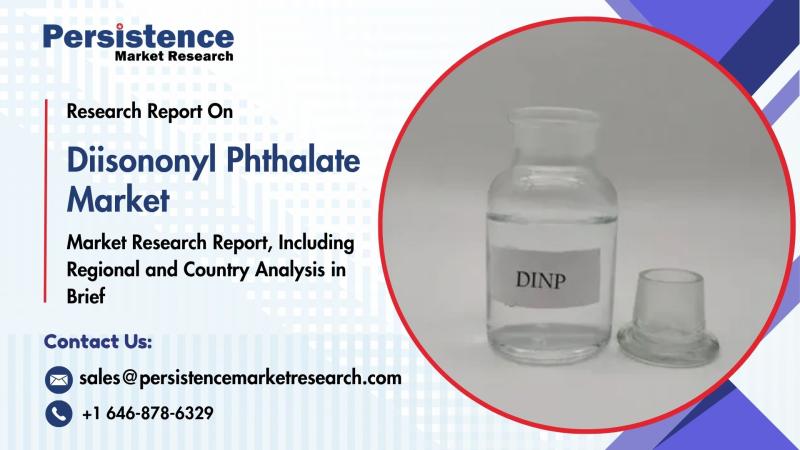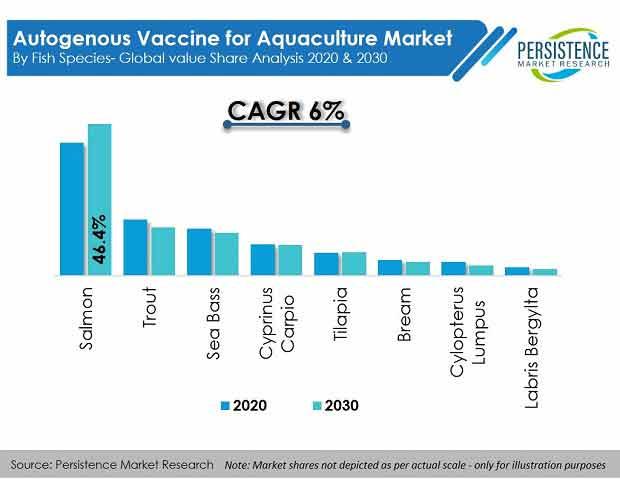Press release
Robotic healthcare to be the future of Autogenous Vaccine For Aquaculture Market
The Autogenous Vaccine For Aquaculture Market is expected to witness a staggering CAGR going forward. The gamut of care is being driven by the usage of sensors, digital technologies, and wearables, thereby allowing the healthcare personnel to delve deep into the patients’ live – be it pre-operative, post-operative, or the period in between. Consumer tech companies are into making caregivers visible outside of the clinical environment a reality.Fish is a widely consumed food across the world. In 2019, 177.8 million metric tons of fish were produced globally. In spite of such huge production in aquaculture, bacterial disease is a major issue, and is causing multibillion-dollar losses annually. In developing countries, fish diseases often spread quickly between small-scale aquaculture farms. Rising prevalence of infectious diseases such as bacterial diseases, viral diseases, and parasitic and fungal diseases amongst fish species remains a global issue for fish farmers.
To remain ‘ahead’ of your competitors, request for a sample @ https://www.persistencemarketresearch.com/samples/32293
Autogenous vaccines have been playing a vital role in bacterial disease control in aquaculture. This is the most effective method for preventing a wide range of bacterial and viral diseases. Autogenous vaccines are widely accepted by aquaculture farming companies during emergency outbreaks, due to very few commercial vaccines being available for specific aquaculture-related diseases.
According to the latest report published by Persistence Market Research, the global autogenous vaccine for aquaculture market was valued at US$ 11 Mn in 2020, and is expected to witness a CAGR of 5.5% during the forecast period (2020 – 2030).
Key Takeaways from Autogenous Vaccine for Aquaculture Market Study
The salmon fish species is expected to contribute more than 40% revenue share to the market.
By pathogen type, bacteria held the highest market share in 2019, due to bacterial infections being more frequent across fish farms.
North America and Europe collectively account for nearly one-third share in the global autogenous vaccine for aquaculture market.
Leading players are focused on improving their services, and have established collaborations with fish farming companies to provide customized products.
Fish farming companies are expected to hold a prominent share in the market, owing to high adoption of autogenous vaccine services at these facilities.
The COVID-19 outbreak has had a negative impact on the global autogenous vaccine for aquaculture market, mainly due to export restrictions.
This industry has expanded at around 4% over the last 5 years, but growth is projected to increase to around 5.5% CAGR through 2030.
The United States accounts for around 20% of global demand.
Norway holds more than one-third of the share in Europe, which is the largest regional market for autogenous vaccines for aquaculture.
“Rise in prevalence of infectious diseases and demand for autogenous vaccines for preventive treatment will boost sales of autogenous vaccines for aquaculture over the coming years,” says an analyst at Persistence Market Research.
Get a Customized Scope to Match Your Need Ask an Expert- sales@persistencemarketresearch.com
Collaborations & Acquisitions Key Strategy amongst Market Players
Leading players in the autogenous vaccine for aquaculture market are strengthening their product portfolios through acquisitions and expanding their regional presence.
For instance, in July 2019, Ceva Santé Animale announced the acquisition of IDT’s veterinary pharmaceutical and R&D activities.
In April 2018, Pharmaq announced the production of fish vaccines at a development center in Suzhou, China.
In November 2016, Ceva announced the acquisition of Hertape Saude Animale Ltda. and Inova Biotecnologia Saude Animale Ltda., two leading Brazilian veterinary biopharmaceutical companies.
Various players in the autogenous vaccine for aquaculture market are focusing on growth strategies such as collaboration and agreement licences.
For critical insights, request for methodology @ https://www.persistencemarketresearch.com/methodology/32293
In December 2020, HIPRA announced its collaboration with IBM to digitize the animal vaccination process.
In April 2019, MARINNOVAC collaborated with CZVACCINES S.A and established AQUATRECK ANIMAL HEALTH S.L, an aquaculture pharmaceutical company.
What Does the Report Cover?
Persistence Market Research offers a unique perspective and actionable insights on the autogenous vaccine for aquaculture market in its latest study, presenting historical demand assessment of 2015 – 2019 and projections for 2020 – 2020, on the basis of fish species (salmon, tilapia, bream, Labris Bergylta, Cyprinus Carpio, Sea Bass, Trout, and Cyclopterus Lumpus), pathogen type (bacteria and virus), and end user (fish farming companies and aquatic research institutes), across seven key regions of the world.
For in-depth competitive analysis, buy now @ https://www.persistencemarketresearch.com/checkout/32293
Complete Report Details@ https://www.persistencemarketresearch.com/market-research/autogenous-vaccine-for-aquaculture-market.asp
Read More Trending "PMR Exclusive Article"-
Pharmaceutical Excipients For Taste Masking Market@ https://www.persistencemarketresearch.com/market-research/pharmaceutical-excipients-for-taste-masking-market.asp
Psoriasis Drugs Market@ https://www.persistencemarketresearch.com/market-research/psoriasis-drugs-market.asp
Contact Us:
Persistence Market Research
Address – 305 Broadway, 7th Floor, New York City, NY 10007 United States
U.S. Ph. – +1-646-568-7751
USA-Canada Toll-free – +1 800-961-0353
Sales – sales@persistencemarketresearch.com
Website – https://www.persistencemarketresearch.com
About us-
Business intelligence is the foundation of every business model employed by Persistence Market Research. Multi-dimensional sources are being put to work, which include big data, customer experience analytics, and real-time data collection. Thus, working on “micros” by Persistence Market Research helps companies overcome their “macro” business challenges.
This release was published on openPR.
Permanent link to this press release:
Copy
Please set a link in the press area of your homepage to this press release on openPR. openPR disclaims liability for any content contained in this release.
You can edit or delete your press release Robotic healthcare to be the future of Autogenous Vaccine For Aquaculture Market here
News-ID: 2531565 • Views: …
More Releases from Persistence Market Research

Smart Door Lock Market Anticipated to Hit USD 9.89 Billion by 2032
The global smart door lock market is experiencing transformative growth as consumer demand for security, convenience, and smart home integration intensifies. The market size is projected to increase from US$ 3,059.7 Mn in 2025 to US$ 9,890.6 Mn by 2032, registering a robust CAGR of 18.3% during the forecast period. Rising concerns about home and workplace security, combined with rapid technological innovations, are fueling the adoption of smart door locks.…

Diisononyl Phthalate Market to Reach US$4.6 Bn by 2031 Driven by Rising Demand i …
The global Diisononyl Phthalate (DINP) market is undergoing a steady expansion, shaped by evolving industrial applications, regulatory dynamics, and technological innovations in plasticizers. As a key phthalate plasticizer, DINP is predominantly used in the production of flexible polyvinyl chloride (PVC) products. Its superior durability, flexibility, and resistance to weathering make it indispensable across a wide range of industries, from construction and automotive to consumer goods.
According to the latest study by…

Propylene Carbonate Market to Reach US$468.2 Mn by 2031, Driven by Rising Demand …
The global propylene carbonate market is entering a promising growth phase, fueled by rising demand across multiple industries, particularly in electronics, automotive, and paints & coatings. Propylene carbonate, a highly versatile organic compound, is widely recognized for its exceptional solvent properties, biodegradability, and low toxicity, making it a preferred choice in green chemistry applications.
According to the latest study by Persistence Market Research, the market is expected to grow from US$275.5…

Flexible Electronics Market Anticipated to Hit USD 5,880.6 Million by 2030
The Global Flexible Electronics Market is forecasted to expand at a CAGR of 11.4%, increasing from a value of US$ 2,762.0 million in 2023 to US$ 5,880.6 million by 2030. Flexible electronics is transforming the conventional electronics industry by integrating lightweight, bendable, and conformable devices into everyday life. These technologies are being widely adopted across consumer electronics, healthcare, automotive, and wearable technology sectors, promising increased portability, efficiency, and user-friendly designs.
Elevate…
More Releases for Autogenous
Autogenous Vaccines Market Size And Global Industry Forecast 2034
"The global autogenous vaccines market is poised for significant growth, currently valued at approximately $1.2 billion in 2024. Forecasts indicate that this market could reach around $2.8 billion by 2034, driven by increasing investments in personalized veterinary medicine and advancements in technology for vaccine development. This projection yields a Compound Annual Growth Rate (CAGR) of approximately 9.1% for the years 2025 to 2034."
On May 27, 2025, Exactitude Consultancy., Ltd. released…
Autogenous Mill Market Size, Share, Development by 2024
Global Info Research offers a latest published report on Autogenous Mill Market Analysis and Forecast 2019-2025 delivering key insights and providing a competitive advantage to clients through a detailed report. The report contains 102 pages which highly exhibit on current market analysis scenario, upcoming as well as future opportunities, revenue growth, pricing and profitability.
Click to view the full report TOC, figure and tables:
https://www.globalinforesearch.com/global-autogenous-mill-market_p108794.html
Autogenous mills are so-called due to the self-grinding…
Autogenous Grinding Mill Market, Share, Development forecast to 2024
New report published by Global Info Research which offers insights on the Global Autogenous Grinding Mill market.
Autogenous Grinding Mill is a device that breaks solid materials into smaller pieces by grinding.
Click to view the full report TOC, figure and tables:
https://www.globalinforesearch.com/global-autogenous-grinding-mill-market_p103921.html
Global Autogenous Grinding Mill Market: Forecast by Type / Application / Region
The worldwide market for Autogenous Grinding Mill is expected to grow at a CAGR of roughly x% over the…
Autogenous Mill Market: Competitive Dynamics & Global Outlook 2023
New report published by Global Info Research which offers insights on the global Autogenous Mill market.
Autogenous Mills are used for grinding large chunks of materials into smaller pieces which can be later used for processing. Such mills are used in the primary stage of grinding process where pieces of raw materials need to be grounded for further processing or sorting. These mills are typically powered using electricity and depending on…
Global Semi-Autogenous and Autogenous Grinding Mills (SAG Mills) Market - Indust …
Albany, New York, April 7, 2017: Market Research Reports Search Engine (MRRSE) announces the addition of a new report titled ‘Semi-Autogenous and Autogenous Grinding Mills (SAG Mills) Market - Global Industry Analysis, Size, Share, Growth, Trends and Forecast . Semi-autogenous grinding (SAG) and autogenous grinding mills are used for grinding large chunks of materials into smaller pieces which can be later used for processing. Such mills are used in the…
Semi-Autogenous and Autogenous Grinding Mills (SAG Mills) Market - Ideal For Tre …
Semi-Autogenous and Autogenous Grinding Mills (SAG Mills) Market: Overview
Semi-autogenous grinding (SAG) and autogenous grinding mills are used for grinding large chunks of materials into smaller pieces which can be later used for processing. Such mills are used in the primary stage of grinding process where pieces of raw materials need to be grounded for further processing or sorting. These mills are typically powered using electricity and depending on the required…
